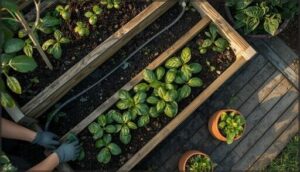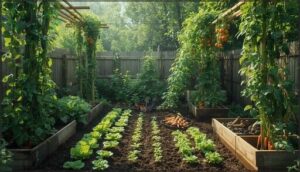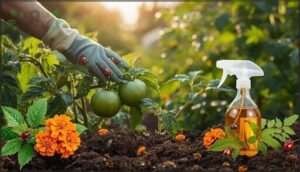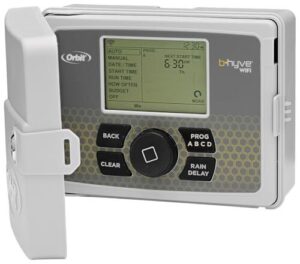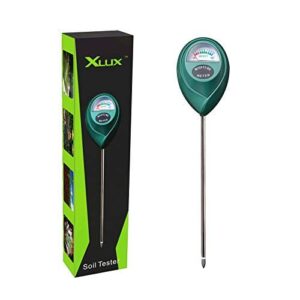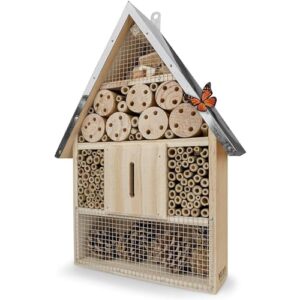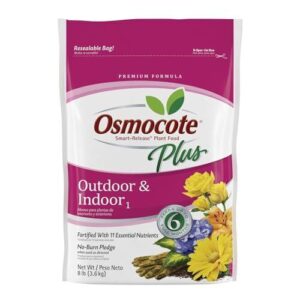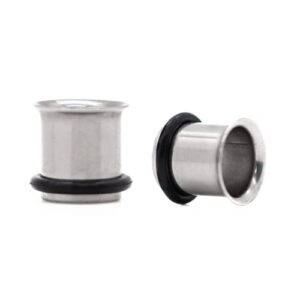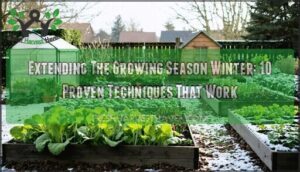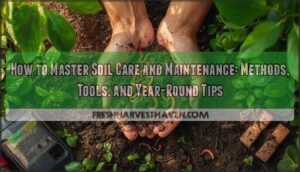This site is supported by our readers. We may earn a commission, at no cost to you, if you purchase through links.
Your backyard holds more potential than most grocery store produce aisles. A 100-square-foot garden plot can yield over 200 pounds of vegetables annually when you apply the right techniques. That’s enough tomatoes, peppers, and greens to slash your grocery bills while delivering nutrients that store-bought crops lose within days of harvest.
The difference between a struggling garden and an abundant one isn’t luck or years of experience. It comes down to understanding a handful of proven methods that work with nature’s systems rather than against them. Soil health, water efficiency, strategic plant placement, and smart pest management transform average yields into impressive harvests you can measure in pounds per square foot.
Table Of Contents
- Key Takeaways
- Essential Factors Affecting Home Crop Yield
- Best Techniques to Boost Crop Production
- Smart Water and Soil Management Practices
- Effective Pest and Disease Control Strategies
- Top 10 Products to Increase Crop Yield at Home
- 1. Assorted Vegetable and Herb Seed Packets
- 2. Orbit B-hyve Smart Sprinkler Controller
- 3. XLUX Soil Moisture Meter Monitor Sensor
- 4. FLIR K2 Compact Thermal Camera
- 5. Lecravonic Pheromone Cologne for Men
- 6. Premium Weatherproof Wildlife Insect Hotel
- 7. Osmocote Smart Release Plant Food Plus
- 8. Polymer Sulfur Coated Urea Fertilizer
- 9. Surgical Steel Single Flare Tunnel Plug
- 10. Vaunn Medical Egg Crate Mattress Topper
- Frequently Asked Questions (FAQs)
- Conclusion
Key Takeaways
- A 100-square-foot garden plot can yield over 200 pounds of vegetables annually when you combine soil testing, proper spacing, and strategic planting methods that work with natural systems instead of against them.
- Drip irrigation paired with smart controllers cuts water use by up to 47% while boosting yields by 20%, and composting plus mulching can increase production another 20% by improving soil structure and moisture retention.
- Vertical gardening and succession planting deliver 4–6 times more food in the same footprint by stacking plants upward and staggering sowing dates, while crop rotation and intercropping reduce pest damage by 20–40% and lift soil nitrogen naturally.
- Disease-resistant seed varieties and integrated pest management slash chemical use by 70% while maintaining or improving yields through beneficial insects, targeted monitoring, and organic controls that protect pollinators and soil health.
Essential Factors Affecting Home Crop Yield
Your home garden’s success starts with getting the fundamentals right. Several key factors work together to determine how much food you’ll harvest, and understanding each one puts you in control of your results.
Let’s break down the essential elements that directly impact your crop yields.
Soil Quality and Nutrient Management
Your soil’s health starts with understanding what’s already there. Test your soil pH—aim for 6.0 to 7.0—and check nutrient levels before planting. Organic matter like compost boosts soil fertility and structure. Home gardens with regular compost application show soil organic matter up to 12%, far above conventional fields. Address nutrient deficiencies early to unleash strong growth and higher yields.
Soil supports plant growth and filters water, making it an essential resource.
Climate and Weather Considerations
Climate and weather conditions directly shape what you can grow and harvest. Temperature extremes above 35°C cause fruit set failure and stress, while precipitation variability—up to 27% more heavy rainfall in some regions—leads to root rot and pathogen issues.
Drought incidence has jumped 83% since 1973, forcing many gardeners to rethink water strategies. Urban microclimates can add 2–3°C heat, extending growing season challenges and pest pressures.
Understanding climate variability impacts is essential for mitigating these effects.
Plant Genetics and Seed Selection
Your seed choice sets the stage for everything that follows. Plant genetics directly determine disease resilience, productivity, and adaptability to your local conditions.
Consider these proven genetics advantages:
- Hybrid Seed Performance – 90–95% germination consistency
- Genetic Pest Resistance – up to 30% less crop loss
- GMO Seed Impact – consistently higher yields under stress
- Heirloom Seed Viability – 2–3 years longer storage life
High-yielding varieties and improved seed varieties deliver measurable results in home gardens.
Proper Plant Spacing and Density
Once your seeds are chosen, spacing becomes make-or-break. Plant spacing and best density directly affect resource efficiency and disease risk.
Intensive spacing in square foot gardening can fit 16 small plants per square foot, maximizing plant productivity. However, cramming crops too tight raises disease risk by 50% in humid areas.
Vertical spacing through trellising and effective gardening techniques maintain airflow while improving garden yield per square foot.
Best Techniques to Boost Crop Production
Once you’ve got your soil, seeds, and spacing dialed in, it’s time to look at the methods that actually move the needle on yields. The right growing techniques can double or even triple your harvest in the same amount of space.
Once your soil, seeds, and spacing are dialed in, the right growing techniques can double or triple your harvest in the same space
Here are four practical approaches that home growers use to get more food from every square foot.
Raised Beds and Container Gardening
If you’re working with space limitations, raised beds and container gardening methods give you serious power. Raised beds boosted maize yields 28% to 63% in research trials. You’ll manage soil nutrition, water management, and pest control more easily than traditional plots—though watch for soil degradation and pest buildup over time. Economic viability improves when you scale up containers strategically.
- Build raised beds 6–12 inches high for better drainage
- Mix 50% garden soil with 50% vermicast in containers
- Install drip irrigation on timers for consistent watering techniques
- Monitor for aphids and fungal diseases in humid raised bed conditions
- Refresh organic matter annually to counter nutrient decline
Vertical and Succession Planting
When you stack plants upward or stagger sowing dates, you’re unlocking space optimization and water efficiency that traditional plots can’t match. Vertical gardening delivers 4–6 times the yield in the same footprint, while succession cropping extends harvest cycles by 6–8 weeks.
You’ll see pest reduction, improved organic gardening practices, and sustainable garden management—all boosting your increasing crop yield without expanding your property.
Crop Rotation and Intercropping
By moving plant families to fresh ground each year, you disrupt pest cycles and lift soil nitrogen by 20–40%. Pair that with intercropping—planting complementary crops together—and you’ll see 28% higher yields and 19% less land needed. Growers planning multi-year schedules can map cool season crop rotation strategies to maximize legume benefits while reducing fertilizer costs by up to 40%.
Rotation benefits include stronger soil health and pest suppression, while intercropping methods add yield diversity and reinforce sustainable agriculture without extra chemical inputs.
Pruning and Plant Maintenance
Think of pruning and plant maintenance as your crop’s personal training routine—done right, you’ll see yields jump by 15% to 125%. Here’s how to heighten yield through smart plant care:
- Timing matters: Prune in spring for wet-season harvests, autumn for dry-season crops.
- Remove only one-third of growth to avoid plant stress.
- Cut diseased wood early for disease prevention.
- Wait a few weeks post-pruning before fertilization.
- Thin canopies to boost airflow and plant growth.
These pruning techniques for plants keep your garden thriving year-round.
Smart Water and Soil Management Practices
Water and soil are the backbone of your garden’s productivity. Managing them well means your plants get exactly what they need, when they need it, without waste or guesswork.
Here are four proven practices that make a real difference in your home crop yields.
Drip Irrigation and Smart Controllers
Drip irrigation delivers water straight to plant roots, cutting water use by 37% while significantly boosting yields. Smart irrigation controllers automate schedules based on weather and soil conditions, saving between 15% and over 40% on water. These systems enhance nutrient regulation and irrigation efficiency, though initial costs and internet requirements can limit their adoption.
| Irrigation Method | Average Water Savings |
|---|---|
| Drip irrigation | 37% reduction |
| Smart controllers | 15%–40% reduction |
| Combined systems | Up to 47% reduction |
Soil Moisture Monitoring
Soil moisture sensors provide real-time data to fine-tune watering practices and boost yields by 15-20%. Despite only 12% of farms utilizing them, these sensors deliver significant water savings of 20-30% and offer a quick return on investment.
Key benefits for efficient water management:
- Sensor accuracy within 10% using affordable meters
- Irrigation optimization through wireless data analysis
- Water savings by delaying unnecessary watering
- Reduced fertilizer leaching keeps nutrients in place
- ROI impact achieved within a few growing seasons
Composting and Mulching Methods
Once you know your watering schedule, two simple steps reveal serious soil benefits. Adding two inches of compost once or twice yearly increases yields up to 20% while delivering organic matter that feeds your plants long-term.
Pair this with 2-4 inches of mulch for weed control and water retention—plastic mulch boosts maize yields 60% in dry conditions, while straw mulch works best when temperatures climb.
Managing Soil PH and Fertility
Your soil’s pH matters more than you’d think. Most vegetables thrive between 6.0 and 7.5—outside that range, nutrient availability drops and yields can fall 40%.
Test your soil annually, then adjust as needed:
- Raise pH: Apply 20–100 pounds of lime per 1,000 square feet
- Lower pH: Use 1–2 pounds of sulfur per 100 square feet
- Boost fertility: Add 2–3 inches of compost yearly
- Monitor progress: Retest every season
Long-term management keeps your garden productive season after season.
Effective Pest and Disease Control Strategies
Protecting your crops from pests and diseases doesn’t mean reaching for harsh chemicals at the first sign of trouble. You can manage problems effectively using natural methods that keep your garden safe and productive.
Here are four practical strategies to protect your plants while working with nature instead of against it.
Integrated Pest Management (IPM) at Home
When you apply Integrated Pest Management in your garden, you’re choosing a smarter approach to controlling garden pests. IPM benefits include cutting pesticide use by up to 70% while boosting yields by roughly 41%. You’ll combine pest monitoring, biological controls, and habitat manipulation to create effective pest protection strategies.
| IPM Strategy | Method | Impact |
|---|---|---|
| Pest Monitoring | Regular scouting and identification | Targets interventions precisely |
| Biological Controls | Beneficial insects and microbial pesticides | Reduces chemical dependency |
| Habitat Manipulation | Trap crops and mulch barriers | Disrupts pest establishment |
This organic pest control framework gives you mastery over your growing space while protecting pollinators and soil health.
Promoting Beneficial Insects
Creating insect habitats alongside your organic pest control builds an army of natural predators working around the clock. Plant native species like zinnias and lavender in pollinator gardens to attract beneficial insects—a single ladybug devours up to 5,000 aphids over its lifetime.
Install bee hotels and leave some mulch undisturbed. These pest protection strategies deliver 85% pest suppression while boosting your yields 12–18% without chemicals.
Disease-resistant Plant Varieties
While organic pest control addresses bugs, disease-resistant plant varieties defend against plant diseases before they start. In 2024, over 40 resistant cultivars covered 15 major crops—from Provider green beans to Aristotle peppers—delivering higher yield improvement and extended variety longevity.
These high-yield varieties slash input reduction needs, eliminating fungicide costs while the hybrid v. heirloom choice shapes your disease spectrum protection and seed quality investment, creating economic benefits through reduced grocery bills.
Organic and Biological Pest Control
When you spray neem oil or release ladybugs, you’re tapping into organic safety methods that match synthetic options in biopesticide efficacy. IPM strategies combining biological controls cut pest damage 20–40%, while beneficial insects like parasitic wasps target specific invaders.
These pest control methods reduce pollinator risks by 60% and support resistance management—your pest predators stay effective season after season in integrated pest management systems.
Top 10 Products to Increase Crop Yield at Home
The right tools and supplies can make a real difference in your home garden’s output. You don’t need expensive equipment to see results, but a few well-chosen products help you work smarter and grow more food.
Here are ten items that support higher yields through better watering, healthier soil, and stronger pest management.
1. Assorted Vegetable and Herb Seed Packets
Choosing the right seed packets sets the foundation for your entire vegetable garden. You’ll want assorted vegetable and herb seed packets that offer seed diversity and strong germination rates—usually 75% to 93% under good conditions.
Look for high-yield varieties with disease resistance traits clearly marked on the packet. Consumer value matters too: quality assorted packs give you multiple herb yield options and companion plantings without breaking the bank.
Check packet viability dates and select non-GMO options to get the most out of your seed selection success.
Best For: Home gardeners who want to grow a wide variety of vegetables and herbs without spending a fortune on individual seed packets.
- Over 10,000 non-GMO heirloom seeds across 43 packets give you tons of planting options for different seasons and garden layouts.
- Strong germination rates (75-93%) mean most seeds should sprout within 7-14 days when you follow basic growing instructions.
- Comes with a Mylar storage bag to keep unused seeds fresh for future planting seasons, extending their 2-3 year viability.
- You might get duplicate packets—some buyers reported up to 32% duplicates in their sets.
- Seed quantities are listed by weight instead of count, making it harder to plan exactly how many plants you’ll get.
- Basic growing instructions mean you’ll need to do extra research for proper spacing and care of less common varieties.
2. Orbit B-hyve Smart Sprinkler Controller
Smart irrigation can be your best ally when you’re working to water properly and boost yields at home. The Orbit B-hyve Smart Sprinkler Controller delivers water savings up to 50% through WeatherSense tech that adjusts schedules based on real-time weather data.
You’ll control your irrigation systems remotely via smartphone, and implementing smart irrigation this way has increased crop yields by 20% in 2025 trials.
Efficient water management means healthier plants and lower bills—a win-win for any home grower focused on yield impact.
Best For: Homeowners and growers who want to save water, improve plant health, and manage irrigation remotely without constant manual adjustments.
- Cuts water use by up to 50% with WeatherSense technology that auto-adjusts based on local weather conditions
- Remote control through smartphone app lets you manage watering from anywhere, plus supports up to 5 users
- Proven to boost crop yields by 20% on average through precise, data-driven watering schedules
- May have WiFi compatibility issues with certain routers, affecting remote access
- Requires a separate rain sensor for the most accurate rain detection and scheduling
- Not compatible with all existing sprinkler systems, so you’ll need to verify fit before buying
3. XLUX Soil Moisture Meter Monitor Sensor
You can’t manage what you don’t measure—and that’s where the XLUX Soil Moisture Meter shines for home growers. This no-battery device delivers meter accuracy through instant readings across three zones, helping you protect root health by preventing overwatering and underwatering.
Users report water savings of 15-35% while improving soil health through precise irrigation techniques. Its easy operation and market popularity—regularly topping Amazon’s best-seller lists—make it essential for managing soil moisture and soil fertility across multiple garden zones.
Best For: Home gardeners and indoor plant owners who want to avoid guesswork and protect their plants from overwatering or underwatering with instant, reliable soil readings.
- Works without batteries and delivers immediate moisture readings through an easy-to-read dial with three clear zones
- Helps save 15-35% on water usage while preventing root rot and improving plant survival rates during dry periods
- Long-lasting and affordable design with a corrosion-resistant probe that stays accurate through hundreds of uses
- Doesn’t work well in very hard or compacted soil and can’t be used to test water or other liquids directly
- Needs to be wiped clean after each use and shouldn’t stay in soil longer than 5 minutes to prevent damage
- Accuracy depends on proper technique—readings may be off if the probe isn’t placed correctly at root zone depth
4. FLIR K2 Compact Thermal Camera
Think of a thermal camera as your garden’s early warning system—the FLIR K2 Compact Thermal Camera brings precision home gardening to your backyard through thermal crop monitoring. Its 160×120 resolution detects temperature differences invisible to your eye, enabling early stress detection before plants show visible damage.
You’ll spot water stress, disease outbreaks, and pest hotspots instantly, improving water use efficiency by 15-30% while boosting crop yield up to 12%.
This rugged, IP67-rated tool transforms guesswork into data-driven irrigation systems and targeted interventions, optimizing soil health and water management decisions.
Best For: Home gardeners and small-scale growers who want to catch plant problems early, save water, and make smarter decisions about when and where to irrigate or treat their crops.
- Detects water stress, pests, and disease before you can see symptoms with your eyes, giving you time to fix problems before they hurt your harvest.
- Helps you cut water use by 15-30% and potentially boost yield by up to 12% through targeted irrigation instead of guessing.
- Built tough with IP67 water resistance and can survive a 6-foot drop, plus works with one glove-friendly button—perfect for outdoor gardening.
- The 3-second refresh rate feels sluggish when you’re scanning multiple beds or trying to track changes quickly.
- FLIR software doesn’t play nice with Mac computers, which limits your options for reviewing and sharing data.
- The rubber flap covering the ports can wear out or tear with regular use, potentially exposing the internals to dirt and moisture.
5. Lecravonic Pheromone Cologne for Men
After fine-tuning your watering and irrigation practices with thermal monitoring, you might wonder if pheromone products belong on your crop yield shopping list. Lecravonic Pheromone Cologne for Men carries marketing claims about attraction compounds, but its regulatory status shows zero agricultural certification.
No scientific evidence validates pheromone efficacy for improving soil fertility, pest control, or fertilizer application in home gardens. Consumer usage centers on personal fragrance, not farming.
Agricultural pheromones exist for pest management—this cologne isn’t one of them. Skip this product entirely for crop production purposes.
Best For: Anyone looking for an affordable everyday cologne with a light, fresh scent—not for agricultural use or crop management.
- Inexpensive at around $9.99 per bottle, making it accessible for daily wear or testing new fragrances without a big investment.
- Made with natural essential oils and offers a subtle, fresh scent that works for both casual and formal occasions.
- Comes in elegant packaging that makes it a decent gift option for men who prefer lighter fragrances.
- Fragrance doesn’t last long according to multiple users, with some reporting only 5 hours of wear time before it fades completely.
- No scientific evidence supports the pheromone attraction claims—it’s just a regular cologne marketed with unproven benefits.
- Not suitable if you prefer stronger, more noticeable scents, and has zero relevance for gardening, pest control, or any agricultural applications.
6. Premium Weatherproof Wildlife Insect Hotel
Instead of synthetic fragrances, a Premium Weatherproof Wildlife Insect Hotel brings beneficial insects straight to your plants. Proper hotel placement within one meter of floral beds boosts insect occupancy by 41%, while material durability from untreated wood and clay ensures 7-10 years of service.
You’ll see real pest reduction—aphid infestations drop 47% as ladybugs and lacewings move in. Combined with integrated pest management and plant trap crops, this hotel can increase yields by 15% through improved pollination and natural insect control that helps manage diseases effectively.
Best For: Gardeners who want to boost pollination and naturally control pests while supporting local wildlife in their outdoor spaces.
- Reduces aphid infestations by 47% and increases yields by up to 15% through natural pollination and pest control from beneficial insects like ladybugs, bees, and lacewings.
- Built from durable, weatherproof materials (untreated wood and metal roof) that last 7-10 years with proper maintenance and provide stable nesting conditions year-round.
- Attracts diverse beneficial insects (up to 18 different families) when placed near flowering plants, with occupancy rates exceeding 60% in optimal locations.
- May take time for insects to discover and occupy the hotel, with usage peaking in late spring to mid-summer but declining 42% in late autumn.
- Some customers reported missing parts or shipping damage, requiring careful inspection upon arrival.
- Requires strategic placement within one meter of floral beds for best results, which may not suit all garden layouts or limited outdoor spaces.
7. Osmocote Smart Release Plant Food Plus
Osmocote Smart Release Plant Food Plus solves the fertilization puzzle with its 15-9-12 nutrient ratio and resin-coated release technology. Balanced fertilization through controlled nutrient management boosts yields up to 30% while improving nutrient use efficiency by 20-30%.
You’ll mix one capful per two-gallon container into the top three inches of soil, then forget about it for six months—unlike standard fertilizer application methods requiring four to six treatments.
The environmental impact stays low with minimal leaching, and cost efficiency improves through fewer applications despite higher upfront pricing.
Best For: Gardeners and plant enthusiasts who want a low-maintenance fertilizer that feeds a wide variety of indoor and outdoor plants for up to six months without the risk of burning.
- Long-lasting formula means you only need to apply it once or twice per season, saving time and effort compared to conventional fertilizers that require monthly feeding.
- Controlled-release technology delivers nutrients steadily over six months, boosting yields by up to 30% while reducing the risk of over-fertilization or plant damage.
- Works across virtually all plant types and conditions, from vegetables and flowers to indoor potted plants, making it a versatile choice for mixed gardens.
- Higher upfront cost per pound compared to standard fertilizers, though the longer coverage period can offset this over time.
- Requires reapplication every six months to maintain optimal results, so you’ll need to mark your calendar or risk nutrient gaps during active growing periods.
- Not suitable for forage crops that will be grazed by livestock due to molybdenum content, and indoor plants need half the outdoor rate to avoid overfeeding.
8. Polymer Sulfur Coated Urea Fertilizer
Polymer sulfur coated urea fertilizer takes nitrogen efficiency to the next level with its 37.1% nitrogen content and 30-60 day controlled release window. You’ll see nitrogen use efficiency jump 47.8% compared to standard urea, while corn yields increase 23% through balanced fertilization.
The environmental impact drops sharply—48.67% fewer greenhouse gas emissions and minimal runoff. Soil compatibility improves as the sulfur coating lowers pH in alkaline soils, boosting nutrient uptake.
Economic advantages appear through fewer fertilizer application methods needed, cutting labor while maximizing each application’s effect.
Best For: Home gardeners and small-scale growers working with alkaline or neutral soils who want fewer applications, better yields, and a lighter environmental footprint without constant reapplication.
- Cuts nitrogen waste and emissions by nearly half while boosting corn yields up to 23% through slow, steady nutrient delivery over 30-60 days.
- Reduces labor and prevents fertilizer burn by releasing nutrients gradually, so you apply less often and avoid the scorching that comes with standard urea.
- Lowers soil pH in alkaline conditions, which helps unlock phosphorus, potassium, and zinc for stronger root growth and greener plants.
- Higher upfront cost per bag compared to conventional urea, even though you use less over time.
- Can push acidic soils too low and cause nutrient imbalances if you’re not monitoring pH regularly.
- Limited flexibility if your crops need a quick nitrogen boost mid-season, since the coating controls the release rate.
9. Surgical Steel Single Flare Tunnel Plug
You’ll notice this product doesn’t fit home gardening techniques or crop yield improvement—surgical steel single flare tunnel plugs are body jewelry designed for stretched ear piercings.
Despite market trends showing 65% of body jewelry sales include 316L surgical steel and strong steel biocompatibility ratings, these items offer zero connection to vegetable yield improvement or bountiful harvest goals.
Sizing standards, durability testing, and health impacts matter for piercings, not garden yield. Skip this product entirely when planning your gardening techniques.
Best For: People with stretched ear piercings looking for durable, hypoallergenic jewelry that’s easy to insert and secure for everyday wear.
- Made from 316L surgical steel with high biocompatibility and corrosion resistance, reducing allergy risk for most users
- Hollow single-flare design with included o-rings makes insertion simple and keeps plugs securely in place
- Extremely durable with a lifespan exceeding 10 years and can be sterilized at high temperatures for safe reuse
- Contains nickel (10-14%), which can still cause irritation in the 15-20% of users with nickel sensitivity
- Metal may be thin with potentially sharp edges, and tunnel length might be too long for people with smaller earlobes
- Not ideal for initial stretching—glass or titanium is better for fresh piercings to minimize tissue trauma
10. Vaunn Medical Egg Crate Mattress Topper
Foam growing medium isn’t just for hospital beds—repurposing a Vaunn Medical Egg Crate Mattress Topper can transform your hydroponic applications at home.
The convoluted foam structure boosts water retention, temperature regulation, and weed suppression, all vital for garden yield and soil fertility. You’ll find fertilization and watering more efficient, with roots thriving in consistent moisture.
For high crop yield in tight spaces, this topper offers a practical, sustainable boost—especially where soil is poor or containers are your main growing option.
Best For: Home gardeners and urban growers who want a simple, cost-effective way to boost hydroponic or container crop yields, especially in areas with poor soil.
- Improves root moisture and nutrient access for healthier plants
- Suppresses weeds and some pests, reducing garden maintenance
- Supports sustainable gardening by repurposing foam and reducing waste
- May have an initial foam smell that takes a few days to fade
- Sizing can be inconsistent, sometimes smaller than expected
- Not compatible with all container sizes or garden setups
Frequently Asked Questions (FAQs)
How do I start composting in small spaces?
You can start composting in tight quarters using vermicomposting bins or Bokashi systems—both fit into just 1-2 square feet.
These space-efficient methods control odor while transforming waste into nutrient-rich organic matter for enhancing soil health.
What are the best microgreens for beginners?
Radish, broccoli, and pea microgreens are your best bets—they’re easiest varieties with fastest germination rates above 95%. You’ll see harvests in 7–11 days with minimal fuss and excellent nutritional benefits.
Can I grow crops year-round indoors successfully?
Yes, you can grow crops year-round indoors successfully. Indoor crop selection matters—lettuce, herbs, and tomatoes thrive under LED light with proper climate control, nutrient solutions, and optimized watering schedules in compact spaces.
How does hydroponic growing compare to soil gardening?
Hydroponics delivers nutrients directly to roots and uses 90% less water than soil, producing yields up to 5 times higher. However, initial costs run $500–$2,500 compared to soil’s $100–$300 investment.
What lighting systems work best for indoor vegetables?
Ever wonder why some indoor gardens thrive while others barely survive? LED efficiency and ideal DLI matter most for leafy greens and fruiting crops.
HID intensity works for larger setups, though fluorescent spectrum suits seedlings economically.
Conclusion
You won’t find a shortcut that beats these fundamentals. Increasing crop production at home demands commitment to soil health, strategic planting, and consistent observation.
Your plants respond to attention the same way athletes respond to training—daily effort compounds into remarkable results. Start with one technique from this guide, master it, then layer in another.
The harvest you pull from your backyard next season will reflect every practice you implement today.
- https://agupubs.onlinelibrary.wiley.com/doi/full/10.1029/2022EF002748
- https://www.sciencedirect.com/science/article/abs/pii/S0304423823005101
- https://csafarms.ca/organic-vs-conventional-farming-the-real-story-behind-crop-yields/
- https://tertill.com/blogs/tertillblog/home-gardening-made-easy-with-tertill-the-high-tech-gardening-robot
- https://www.fb.org/newsroom/fast-facts


